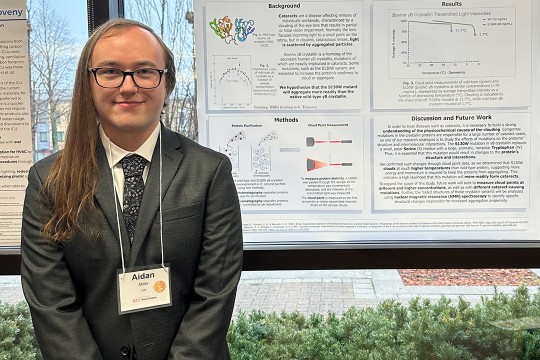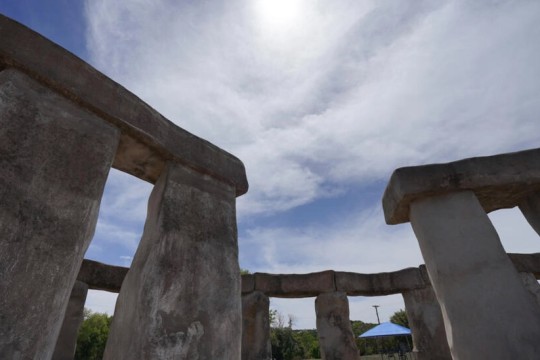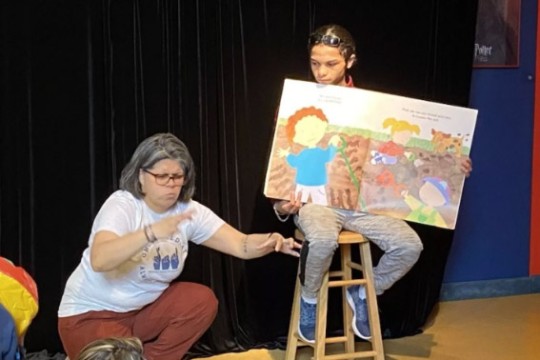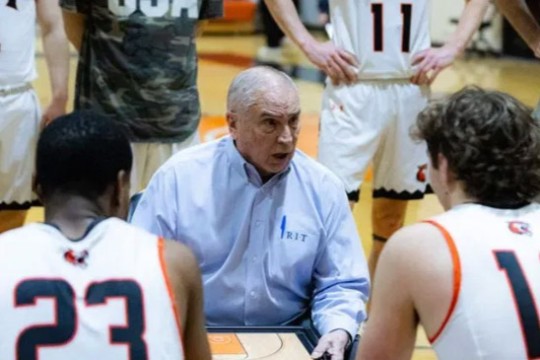Student makes strides in Ph.D. program
Christine Trombley stands in front of the telescopes at the W. M. Keck Observatory on the summit of Mauna Kea, Hawaii. The RIT astrophysical sciences and technology graduate student will earn her Ph.D. this May.
Christine Trombley keeps an ambitious to-do list. This May, she will check off her latest achievement—earning her Ph.D. from RIT’s astrophysical sciences and technology program.
“It is an amazing feeling to finally reach one of my primary goals in life,” Trombley says. “I have known I wanted a Ph.D. since I first started out as an undergraduate.”
Trombley, originally from Warren, Mich., studied the mass distribution of stars in clusters for her dissertation, “Investigation of the Intermediate and High End Initial Mass Function as Probed by near-Infrared Selected Stellar Clusters.” Her research at RIT led to an observing trip to Mauna Kea, Hawaii, and a three-month internship at the Goddard Space Flight Center in Greenbelt, Md., to gather data about groups of extremely large stars.
“These stars are much more massive than the sun, even as much as 200 times more massive,” Trombley says. “The mass distribution of these stars can tell astronomers about massive star formation, a topic which remains a theoretical challenge.”
Trombley’s thesis adviser, Don Figer, director of RIT’s Center for Detectors, is an expert on massive stars.
“Christine’s research has been a tour de force representing work that she has done with me since 2007,” Figer says. “I expect her to go on and have a successful research career in the fields of massive stars and massive star clusters.”
The conferral of Trombley’s degree will bring closure to the inaugural class of astrophysical sciences and technology students that started the program in 2008, says Andrew Robinson, director of astrophysical sciences and technology.
“Christine was the first AST student to win an external fellowship—a NASA Graduate Student Research Fellowship—and when she graduates in May, she will also become the first woman to earn a Ph.D. in the AST program,” Robinson says.
Trombley is currently looking for a postdoctoral fellowship to continue her astrophysical research on massive stars and add to the collective understanding of the world.
“Astrophysics puts together the pieces of the puzzle of the universe,” she says. “If you are prepared to work hard, it’s possible to add your own contribution to understanding the nature of the universe.”















